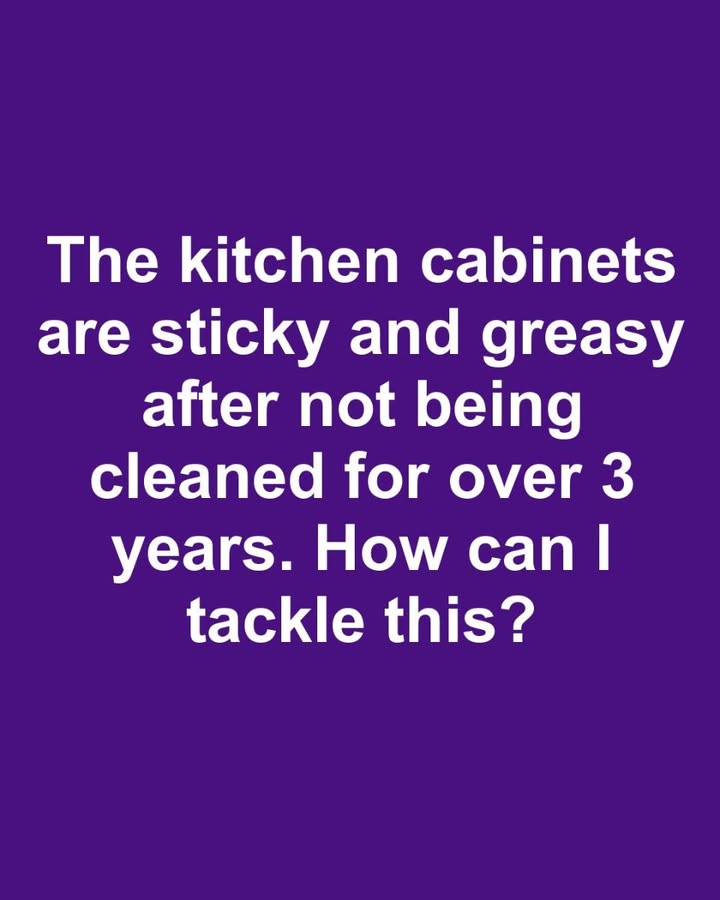The kitchen is often considered the heart of the home, a space where meals are lovingly prepared and shared, and where family and friends gather to create lasting memories. However, over time, all the cooking, frying, baking, and food prep can take a toll on the kitchen’s cleanliness, especially when it comes to the cabinets.

If you’ve been using your kitchen for years without deep-cleaning your cabinets, you may have started to notice a sticky, greasy film coating the surfaces. This buildup not only makes your cabinets look dull and dirty, but it can also trap dust and grime, making the space feel less fresh and inviting. When cabinets haven’t been properly cleaned in more than three years, that layer of grime can become thick and stubborn, requiring more than a simple wipe-down to remove. The good news is, with the right approach and a little elbow grease, you can bring your cabinets back to life and restore that clean, polished look your kitchen once had.
The problem typically stems from a combination of airborne cooking oils, steam, and smoke, all of which carry tiny particles of fat that settle on nearby surfaces, especially cabinets positioned above the stove. These oily residues attract dust, pet dander, and dirt from the air, which then bind to the surface and create that telltale sticky texture. Without regular cleaning, the layers continue to build, becoming more difficult to remove as time goes on. This problem is particularly noticeable in households that do a lot of stovetop cooking or frying, where oil particles can travel quickly throughout the space. Unfortunately, many people either forget to clean their cabinets or assume a quick wipe with a damp cloth is enough, which often just spreads the grime around rather than eliminating it.
When tackling greasy cabinets, it’s important to use the right tools and products. Warm water and dish soap can help break down light grease, especially if the soap is formulated to cut through oil. For tougher grime, a mixture of white vinegar and water can be a more effective solution, as vinegar helps to dissolve grease and acts as a natural disinfectant. If vinegar isn’t strong enough, a paste made from baking soda and water applied with a sponge or soft brush can work wonders on extra sticky spots. Avoid abrasive tools like steel wool, which can scratch and damage cabinet finishes.
Instead, use microfiber cloths, soft sponges, or old toothbrushes to scrub crevices, handles, and trim where grime often hides. For those with wooden cabinets, it’s crucial to avoid saturating the wood with water. Excessive moisture can cause warping or discoloration, especially if your cabinets are made from real wood rather than laminate. After cleaning, always dry cabinets thoroughly with a clean, dry cloth. To restore the shine and condition of wooden cabinets, consider using a wood polish or conditioning oil after cleaning. This helps not only to enhance the appearance but also to protect the surface from future buildup. Once your cabinets are clean, maintaining them becomes much easier. Incorporating cabinet cleaning into your regular kitchen routine—whether monthly or quarterly—can prevent the return of sticky buildup. Simply wiping down cabinet fronts with a gentle cleaner or even a damp cloth after cooking sessions can help keep grease from setting in. Installing a range hood or using the stove’s exhaust fan while cooking can also reduce airborne grease and steam, helping to protect nearby surfaces. If you find yourself avoiding cleaning your cabinets because the job seems overwhelming, break it into manageable sections—tackle a couple of doors at a time over a few days. Eventually, the entire kitchen will look and feel refreshed without the stress of a massive single-day deep clean. In the end, a clean kitchen isn’t just about looks—it contributes to a healthier home environment and makes cooking more enjoyable. So, if it’s been years since your cabinets had a deep clean, now’s the perfect time to give them the attention they deserve and bring the heart of your home back to life.





